Combining plants in pots is a great way to create beautiful and unique arrangements. Nearly all plant can be grown in a container, but some do better than others.
Annual flowers bloom quickly and often for months, but they must be changed out at the end of each season. Long-blooming perennials are good choices for containers; they can live on in a container for several years, but they may require a bit of extra maintenance — pruning or fertilizing.
When choosing plants for containers, pick plants that have attractive foliage for months at a time; choose plants with blooms that last a long time–at least several weeks; pick plants that have forms suitable for containers such as a striking upright habit or a graceful trailing habit.
When combining plants in pots, it’s important to consider their watering, lighting, and spacing needs. Plants with moderate drought tolerance are a good choice because it can be difficult to keep container plantings moist all of the time.
Here are some tips on how to combine plants effectively in pots; following these tips can help you create beautiful and harmonious plant combinations in pots that will enhance the aesthetic of your space.
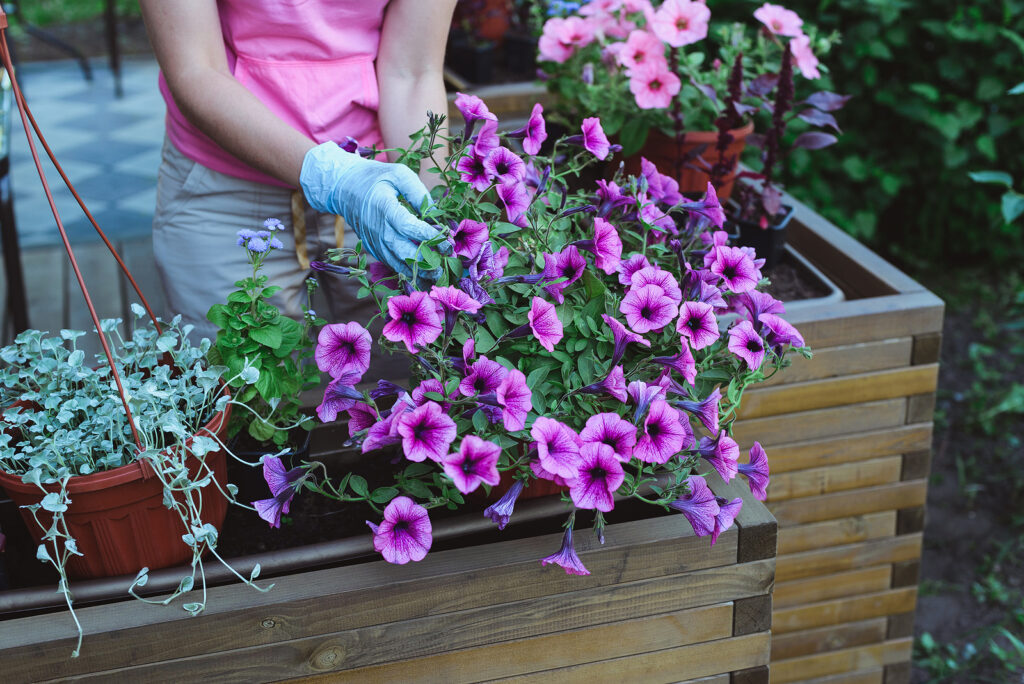
Choose plants with similar needs
Choose plants with similar light and water requirements. This will ensure that all the plants in the pot thrive and remain healthy. Placing plants with similar care needs makes watering and maintenance easier. Grow full-sun plants in one container and shade-loving plants in another.
Consider the season
Be mindful of the season when combining plants in a pot. Choose plants that will thrive in the current season and will complement each other in terms of color, texture, and overall aesthetic. Combine plants that bloom at the same time or have similar foliage colors.
Think about the container and potting mix
Choose a pot that complements the colors and styles of the plants you are combining. Make sure the pot has drainage holes to prevent waterlogged soil. Make sure to use a high-quality, well-draining potting mix when combining plants in a pot.
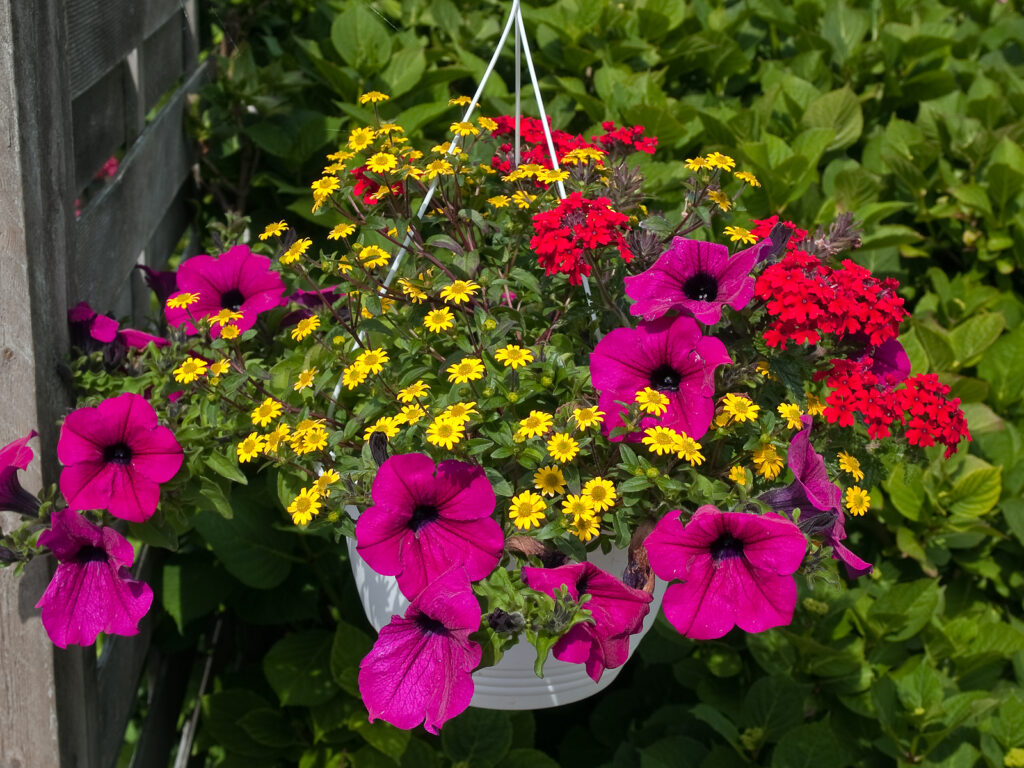
Select a focal point plant
Select a focal point plant as the centerpiece of your arrangement, such as a tall plant or one with interesting foliage. Add mid-size and smaller plants around it to complement and enhance the focal plant.
Use a variety of plants
Use a variety of plants. Mix different types of plants, such as foliage plants, flowering plants, and trailing plants, to create a dynamic and balanced arrangement. Combining plants with different heights, shapes, and growth habits will add interest to the arrangement. You can also group plants with contrasting colors or textures for a striking contrast; for example: mix silvery greens with deep greens, fuzzy-leaved plants with shiny-leaved plants, and large leaves with tiny feathery leaves.
Consider the plants’ mature size
Consider each plant’s mature size and growth habits of each plant before combining them in a pot. You want to make sure that all the plants have enough room to grow without overcrowding each other. Give each plant enough space to grow and spread out in the pot. Avoid overcrowding the plants, as this can lead to competition for resources and hinder their growth.
Group plants strategically
Create depth and dimension in the arrangement by layering plants of different heights and sizes in the pot. Group plants by height: When combining plants in a pot, it’s important to group taller plants towards the back of the pot and shorter plants towards the front. This will create a more balanced and cohesive look.
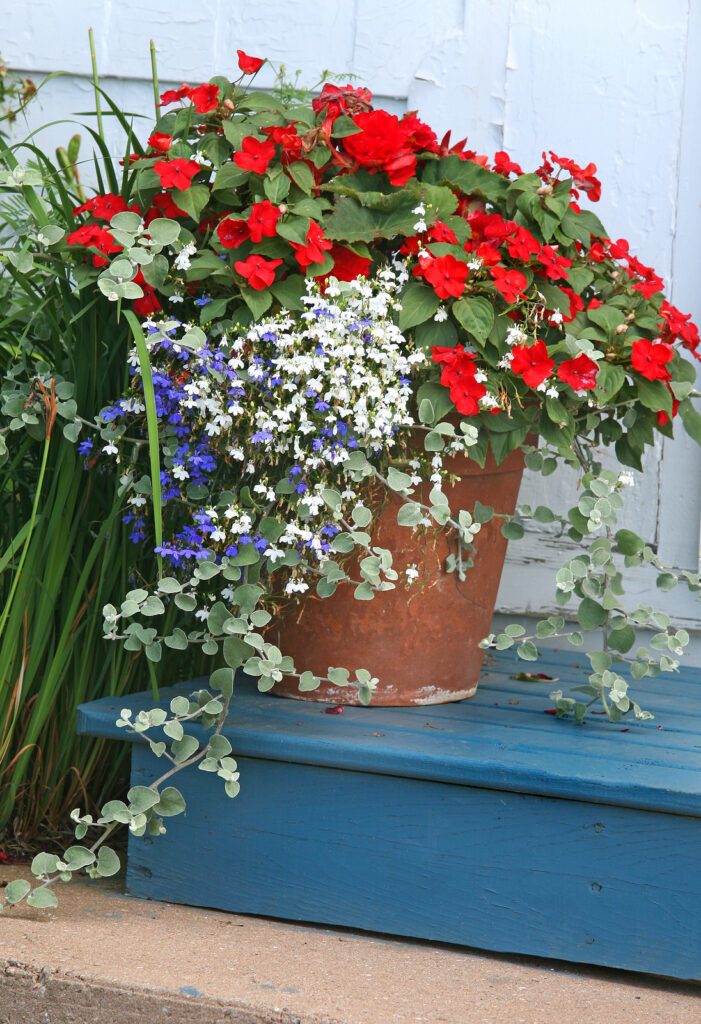
Consider using a thriller, filler, and spiller
This planting technique involves adding a tall, eye-catching plant as the thriller, filler plants to add fullness and texture, and trailing plants as spillers to cascade over the edges of the pot.
Follow this formulat: Plant at least three different plants–one tall and spiky, one low and trailing, and one of medium height as a filler.
Experiment and have fun: Don’t be afraid to experiment and try different combinations of plants in pots. Mixing and matching different plants can result in beautiful and unique container gardens.
Here are some suggested container plants:
Tall, spiky plants – thrillers
| Common name | Botanical name |
| Bells of Ireland | Moluccella laevis |
| Canna | Canna hybrids |
| Celosia | Celosia spp. |
| Flax, New Zealand | Phormium spp. |
| Salvia, annual blue | Salvia farinacea |
| Snapdragon | Antirrhinum majus |
| Spider flower | Cleome hassleriana |
| Tobacco, flowering | Nicotiana spp. |
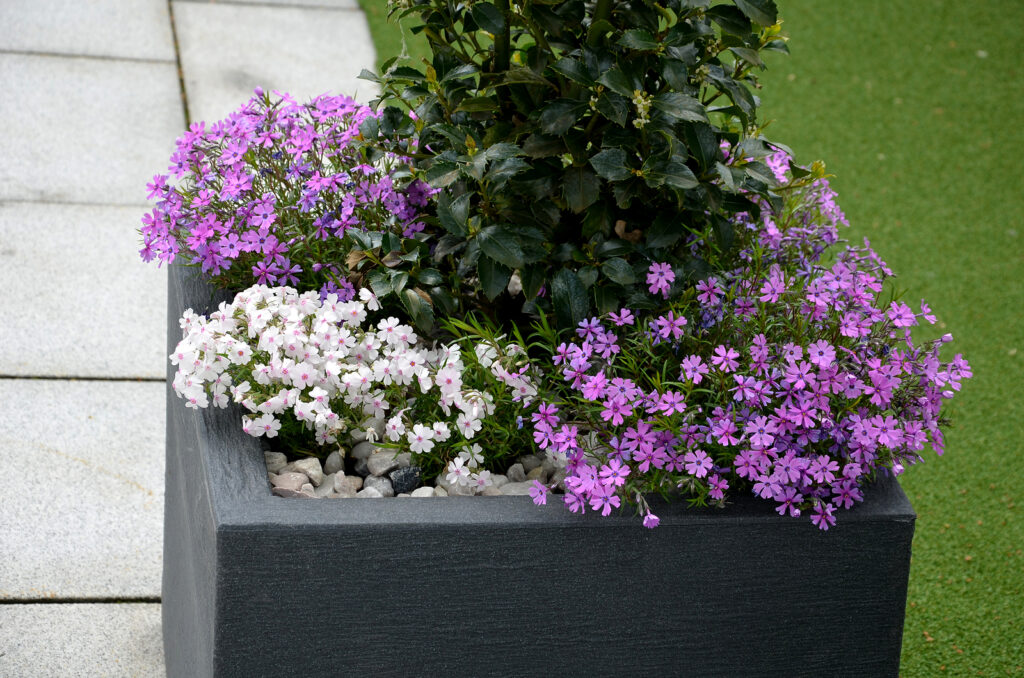
Mid-height plants — fillers
| Common name | Botanical name |
| Begonia, various | Begonia spp. |
| Dusty miller | Senecio cineraria |
| Floss flower | Ageratum houstonianum |
| Flowering cabbage, kale | Brassica oleracea |
| Geranium, upright types | Pelargonium spp. |
| Globe amaranth | Gomphrena globosa |
| Grasses, ornamental | Various |
| Heliotrope | Heliotropium arborescens |
| Impatiens | Impatiens spp. |
| Marigold | Tagetes spp. |
| Pansy | Viola spp. |
| Tuberous begonia | Begonia x tuberhybrida |
| Vinca, annual | Catharanthus roseus |
| Wishbone flower | Torenia fournieri |
| Zinnia | Zinnia spp. |
Low, trailing plants – spillers
| Common name | Botanical name |
| Dahlberg daisy | Thymophylla tenuiloba |
| Lobelia, edging | Lobelia erinus |
| Fan flower | Scaevola aemula |
| Fuchsia | Fuchsia spp. |
| Geranium, ivy type | Pelargonium spp. |
| Ivy | Various |
| Lantana | Lantana camara |
| Licorice plant | Helichrysum petiolare |
| Nasturtium | Tropaeolum majus |
| Petunia | Petunia spp. |
| Swan River daisy | Brachycome iberidifolia |
| Sweet alyssum | Lobularia maritima |
| Sweet pea | Lathyrus odoratus |
| Sweet potato vine | Ipomoea batatas |
| Verbena, trailing forms | Verbena spp. |
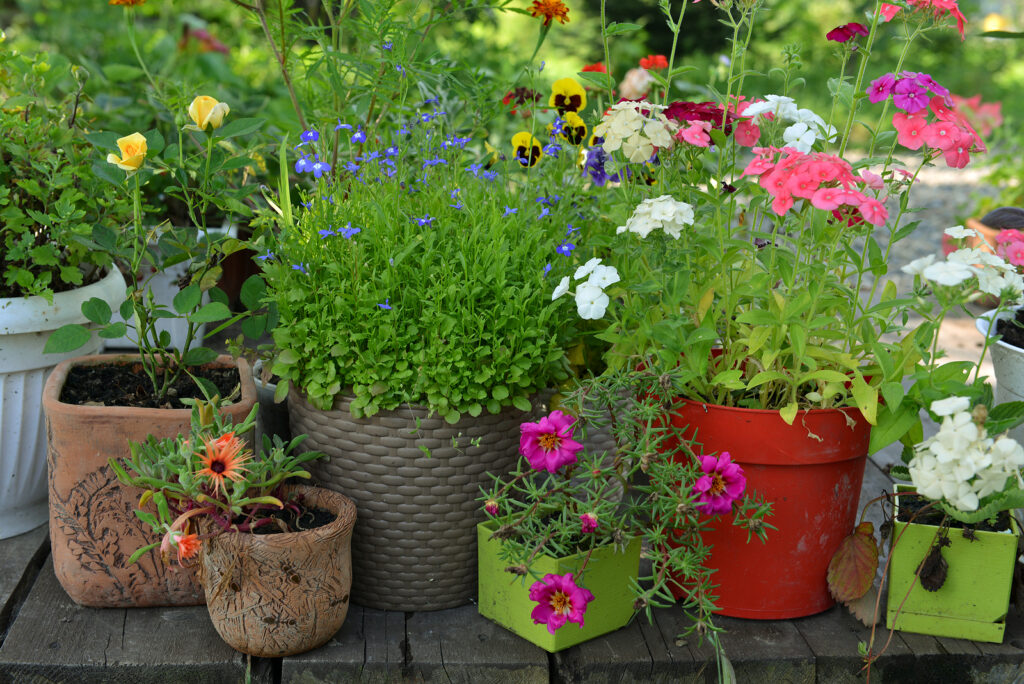
Drought-tolerant container plants
| Common name | Botanical name |
| Agapanthus | Agapanthus spp. |
| Artemisia | Artemisia spp. |
| Cactus | Various |
| Dusty miller | Senecio cineraria |
| Geranium, annual | Pelargonium spp. |
| Flax, New Zealand | Phormium spp. |
| Hens and chicks | Sempervivum spp. |
| Kalanchoe | Kalanchoe |
| Lantana | Lantana spp. |
| Licorice plant | Helichrysum petiolare |
| Moss rose | Portulaca spp. |
| Salvia, annual blue | Salvia farinacea |
| Sedum, various | Sedum spp. |
| Thyme | Thymus spp. |
| Verbena | Verbena spp. |
| Yucca | Yucca filamentos |
Related articles:
Flower Gardening in Containers
Container Vegetable Gardening Guide
Choosing Plants for Containers
Pot and Container Sizes for Growing Vegetable Crops















